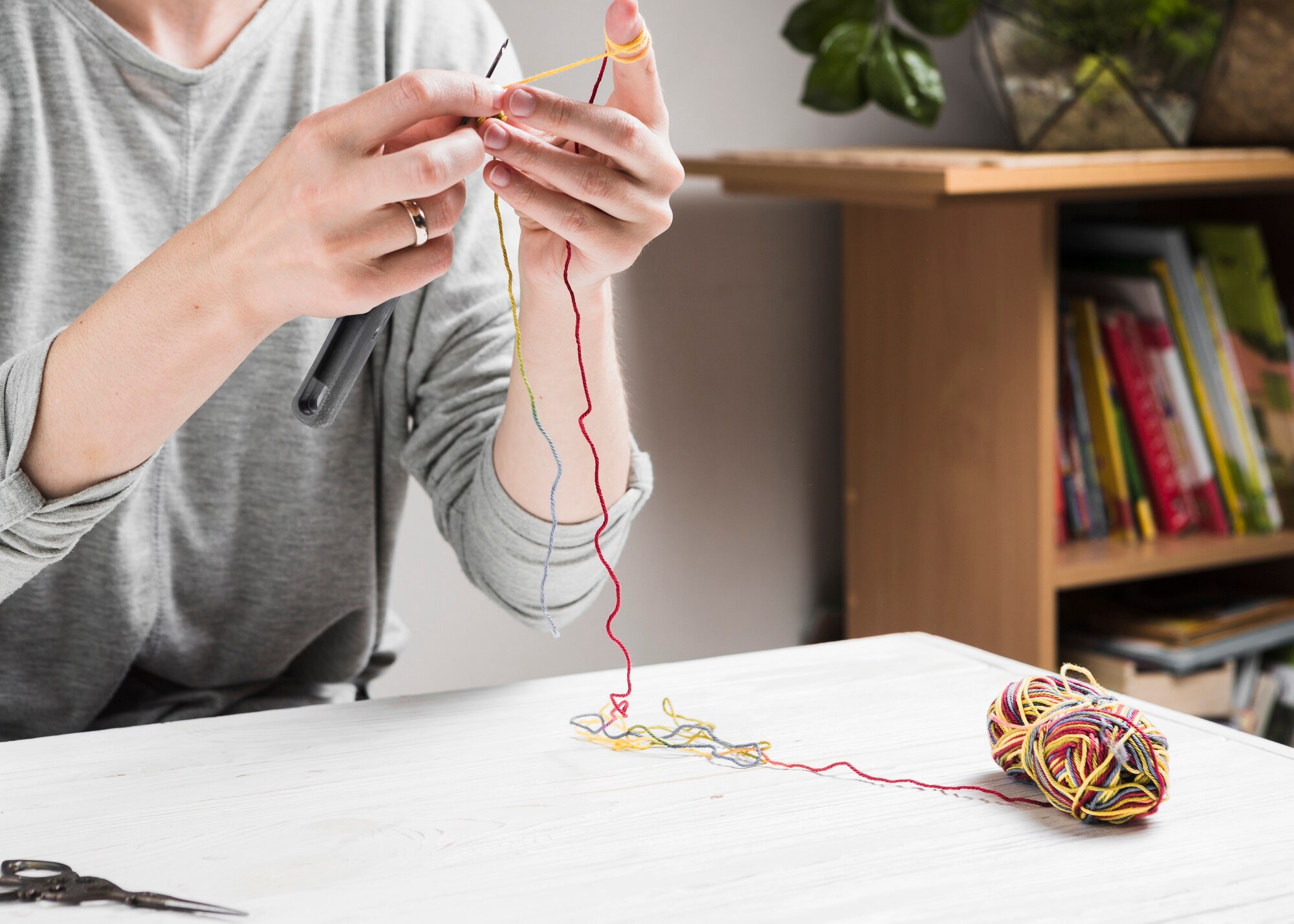In today’s world, where we are constantly moving at breakneck speeds, it’s easy to overlook one of the most essential virtues—patience. Yet, as the old saying goes, “Good things come to those who wait.” And when it comes to the world of art, one creative practice that teaches this virtue in abundance is yarn bombing. This unique form of street art is not only about creating visually stunning pieces in public spaces but also about embracing the process of creation, which requires patience, persistence, and a mindful approach.
Yarn bombing, also known as guerrilla knitting, is a practice that involves decorating public objects—like trees, street signs, lamp posts, and even sculptures—using colorful, knitted, or crocheted fabric. While the final result is often visually striking, it’s the act of creating these pieces that offers a deeper, more enriching experience, one that teaches patience at every step. If you’ve ever considered getting involved in yarn bombing or simply wondered what the practice entails, this article will take you on a journey through its process and show how it can cultivate patience, creativity, and mindfulness.
What Exactly is Yarn Bombing?
Yarn bombing is an unconventional form of street art that substitutes the typical use of spray paint with yarn, knitting, or crocheting. The term “yarn bombing” was coined in the early 2000s by artist Magda Sayeg in Texas, who is widely recognized for her contributions to the practice. However, the roots of this creative movement go back further, as artists have been experimenting with textiles and fibers for centuries. Yarn bombing, at its core, is about covering urban spaces and everyday objects with knitted or crocheted fabric in an unexpected and artistic manner.
The art form itself can vary in complexity—ranging from simple wraps around trees or poles to intricate, large-scale installations that involve detailed patterns and hundreds of hours of work. Yarn bombers aim to transform the mundane into something extraordinary, infusing life and color into otherwise ordinary, everyday objects. As an art form, it’s both ephemeral and bold—often temporary in nature, with pieces disappearing as quickly as they appear, but leaving behind a sense of wonder in the spaces they briefly inhabit.
Patience: The Heartbeat of Yarn Bombing
One of the most significant lessons yarn bombing teaches is patience. Unlike traditional forms of art that can sometimes be completed quickly, yarn bombing demands that the artist takes their time. Whether you’re knitting a blanket-sized piece to cover a bus stop or crocheting a small motif for a tree, the process requires careful attention and, above all, patience.
The Slow Process of Creation
Unlike painting or digital design, where instant results are often visible, knitting and crocheting are slow, deliberate practices. A single stitch takes time, and the work involved in creating a larger piece can span hours, days, or even weeks. For many artists, this slower pace isn’t frustrating; it’s a calming experience. In fact, the repetitive motions of knitting or crocheting can become meditative, allowing the artist to clear their mind and focus solely on the task at hand. With every loop of yarn, the artist inches closer to completing their work, developing a sense of satisfaction that grows with every step.
It’s also during this slow process that the artist learns to embrace imperfections. Yarn bombing projects rarely go off without a hitch—there may be errors in measurements, or the yarn might not stretch as expected. However, these moments force the artist to remain patient and find solutions, further enhancing the art of practicing patience. It’s not about getting the piece done quickly; it’s about learning to enjoy the process and finding beauty in the effort.
Attention to Detail
Another layer of patience required in yarn bombing is the meticulous attention to detail. The artist must carefully select the colors of yarn, design patterns, and consider the best ways to attach the fabric to the object. Often, a piece will be so intricate that it requires dozens of small steps to achieve the desired result.
For example, covering a lamppost with a series of delicate crocheted flowers might take hours to complete. The flowers must be evenly spaced, and the fabric must be securely fastened, requiring multiple iterations and adjustments along the way. This attention to detail means that the artist isn’t rushing through the process; rather, they are focused on creating something beautiful, step by step, stitch by stitch.
This dedication to detail can also be seen in the thoughtful placement of the yarn bomb itself. Artists often take into account the surroundings of the object they’re covering—whether it’s a tree in a park, a statue in a town square, or a street sign. The design and execution are intended to complement the environment, adding a vibrant layer to the urban landscape. Such careful planning and execution don’t happen overnight—they take time, patience, and a deep appreciation for the craft.
Mindfulness and Meditation through Yarn Bombing
Yarn bombing is more than just a physical craft—it is an emotional and mental experience that encourages mindfulness. The act of sitting down with yarn, needles, and a clear focus, and then working patiently on a piece, allows the artist to experience a form of active meditation. As they crochet or knit, the artist is often completely immersed in the rhythm of their work, shutting out distractions and focusing solely on the task at hand.
A Form of Active Meditation
Much like traditional meditation, yarn bombing requires the artist to be present in the moment. As the hands move in a steady rhythm, and the yarn gradually takes shape, the artist enters a state of flow—where time seems to stand still, and the mind is freed from worries and anxieties. This state of flow is akin to the mindfulness practiced in meditation, where the artist’s entire being is focused on the present.
For many, the practice of yarn bombing becomes a form of therapy. It offers a way to relax, calm the mind, and de-stress from the pressures of daily life. The repetitive act of crocheting or knitting serves as a form of active relaxation, helping the artist let go of any stress, anxiety, or distractions. It’s a form of self-care that rewards the artist with both creative satisfaction and mental clarity.
Therapeutic and Restorative
Yarn bombing can be therapeutic for individuals who need a creative outlet or who are looking for a way to unwind. The process of working with yarn is not just a creative endeavor—it also provides emotional relief. The artist might find themselves lost in the tactile sensations of the yarn, feeling the soft fibers run through their fingers as they create their work. This connection to the material world can be restorative and grounding.
It’s also during this process that the artist becomes attuned to the passage of time. Unlike other fast-paced activities, yarn bombing is an exercise in slowing down and appreciating the present. The artist learns to let go of the pressure to finish quickly and, instead, finds joy in each stitch, each loop of yarn, and every small progress made toward the end goal.
The Transformative Power of Yarn Bombing in Communities
Although yarn bombing often starts as a solo activity, it has the potential to bring entire communities together. When artists yarn bomb public spaces, they engage with the world around them in a way that sparks curiosity and joy. The art form has the power to transform mundane urban environments into vibrant, colorful spaces that brighten people’s day. The result is not just a work of art, but a shared experience.
Building Connections Through Creativity
Yarn bombing can foster connections between artists and the communities in which they work. The colorful patterns and designs may intrigue passersby, who stop to appreciate the work or even engage with the artists. It’s a way for artists to leave their mark on a city, but also to offer something free for everyone to enjoy. Public yarn bombs often become conversation starters, as people stop to take pictures, chat, or simply admire the work.
Through yarn bombing, communities are reminded that art doesn’t have to be confined to galleries and museums—it can be found in the everyday, in the spaces where people walk, work, and play. By taking the time to create something for the public, the artist practices patience not just for themselves but for the larger community they are engaging with.
Conclusion: Patience, Creativity, and the Reward of Yarn Bombing
Yarn bombing is an art form that teaches us to slow down and embrace the process. In a world obsessed with speed and immediate results, this creative practice invites us to take our time, be patient, and savor each moment of the creative process. Whether you’re knitting a simple scarf or covering an entire statue with intricate crochet work, the act of yarn bombing is a meditation on patience, creativity, and mindfulness.
Through yarn bombing, artists not only create beautiful and unexpected pieces of art for the public to enjoy but also nurture their own growth. They learn that the journey is as important as the destination. So, the next time you sit down with your yarn and needles, remember—patience is not just a skill, it’s an art form in itself.



